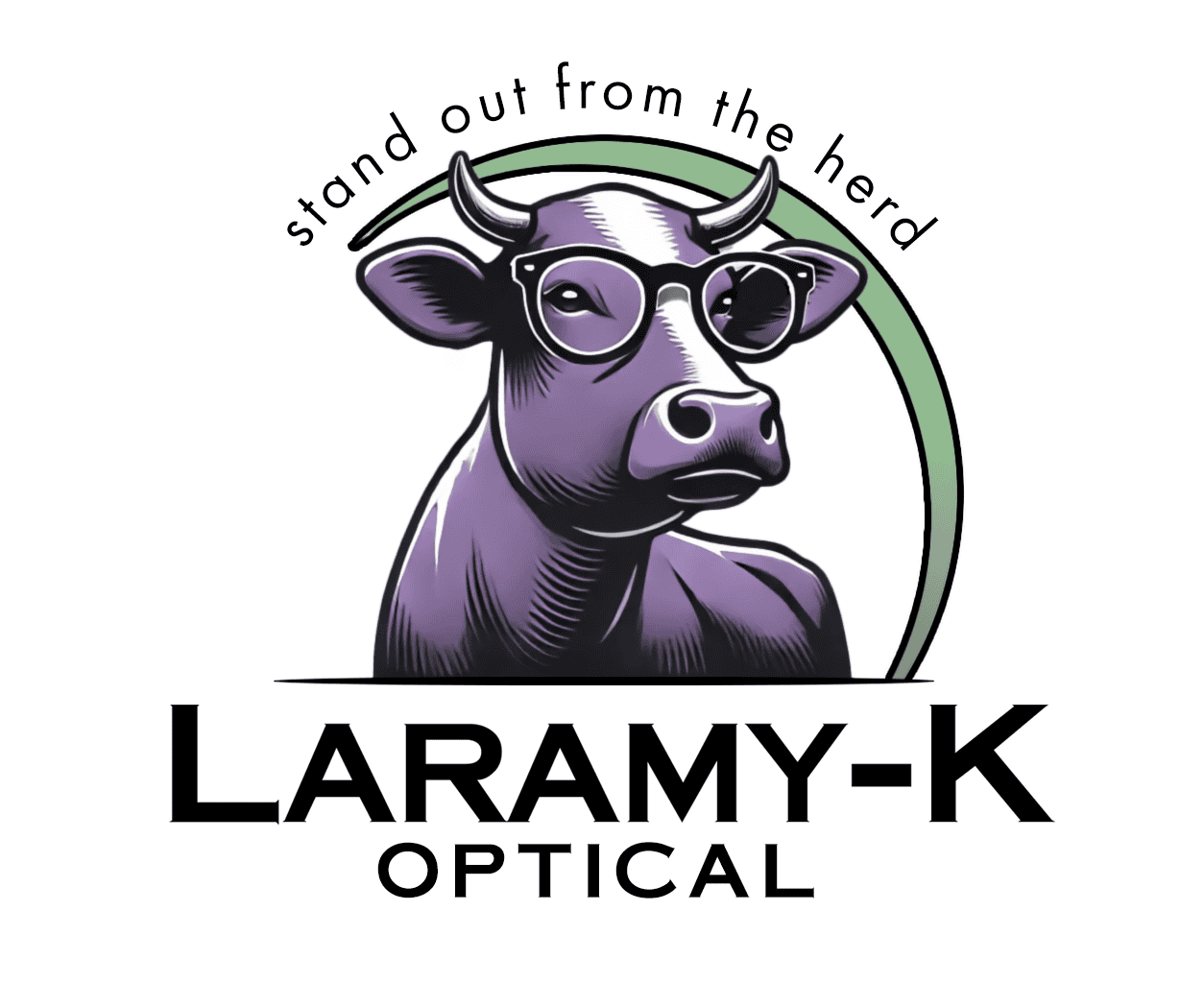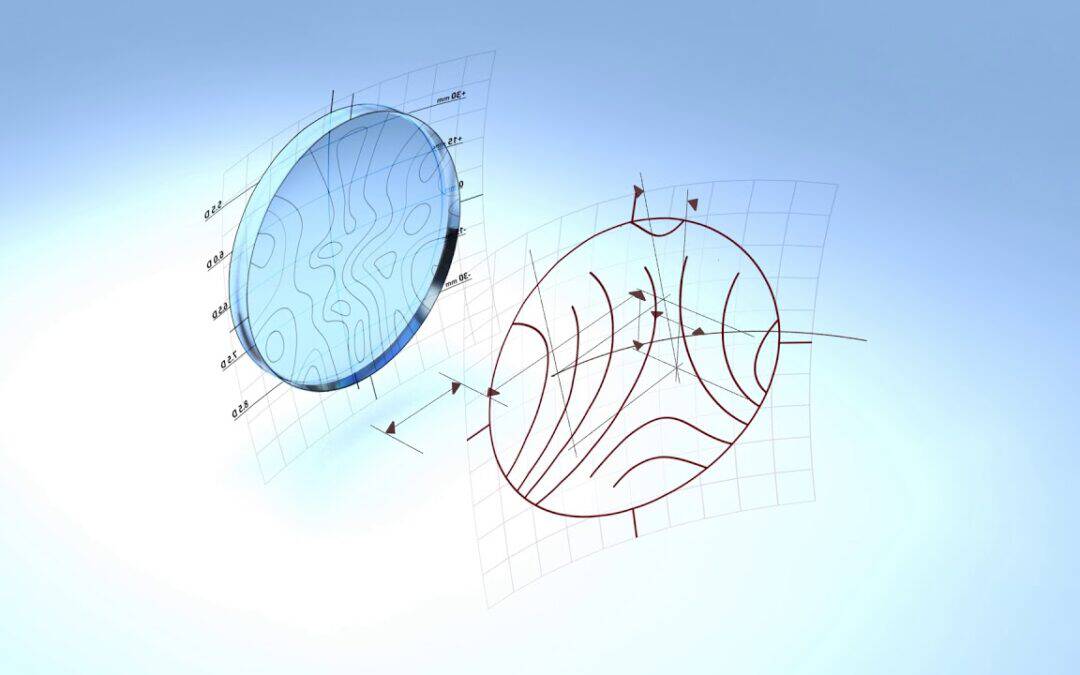What is lens surfacing?
Lens surfacing is a process used in the production of eyeglass lenses. This process involves shaping the lens to meet the specific prescription requirements of an individual. It's a critical step in ensuring that the lenses provide the correct vision correction. Here's a brief overview of the process:
Blank Selection: It starts with a lens blank, which is a piece of material (like plastic or glass) that has not yet been shaped. The blank is chosen based on the prescription and the type of lens material required.
Blocking: The lens blank is mounted or "blocked" in a machine so it can be accurately worked on. This involves attaching the blank to a block using a special adhesive or chuck. The block provides stability and precision during the surfacing process.
Generating: The lens is then cut to a rough shape using a diamond-tipped tool or a laser in a process known as "generating." This step removes the bulk of the material to create the general curvature needed for the prescription.
Fining/Polishing: After generating, the lens is smoothed and polished. This involves finer grinding and/or polishing to remove any marks or imperfections left by the generating process, resulting in a clear and smooth surface.
Quality Check: The lens is inspected for quality, ensuring that it meets the required prescription and has no defects.
Coating (if applicable): Finally, various coatings (like anti-reflective, scratch-resistant, or UV-protection coatings) can be applied to the lens.
Lens surfacing is a blend of skilled craftsmanship and advanced technology that takes place before the process of finishing. The precision and care taken in this process are crucial for producing lenses that provide clear, accurate vision correction.
Laramy-K was established in 1990 as a surfacing-only lab and has since added coating facilities, freeform generation capability, and lens finishing services.
What is a surfacing lab?
A surfacing lab is a specialized facility where the process of lens surfacing is carried out. This lab is responsible for crafting prescription lenses for eyeglasses and sometimes other types of optical lenses. The key functions and features of a surfacing lab include:
Equipment and Machinery: The lab is equipped with advanced machinery for lens surfacing, including generators for cutting the lens to the basic prescription shape, and fining and polishing machines to refine the lenses to a smooth finish.
Lens Customization: In a surfacing lab, lenses are customized to an individual's prescription. This involves adjusting the curvature of the lenses to correct for vision problems like nearsightedness, farsightedness, astigmatism, or more complex optical requirements.
Coating Application: Many surfacing labs also apply various coatings to lenses, such as anti-reflective, scratch-resistant, UV-blocking, or blue light filtering coatings.
Quality Control: The lab conducts rigorous quality checks to ensure that each lens meets the prescribed optical standards and is free from defects.
Skilled Technicians: Technicians in surfacing labs are trained in both the technical and craftsmanship aspects of lens production. They understand the intricacies of lens prescriptions and how to translate them into physical lenses.
Collaboration with Eye Care Professionals: Surfacing labs often work closely with optometrists, ophthalmologists, and opticians to ensure that the lenses they produce accurately meet the needs of the patients.
Innovation and Technology: These labs continually adopt new technologies and methods to improve lens accuracy, durability, and functionality.
What is the difference between finishing, finished uncut lenses, semi-finished, and surfacing?
Finishing is the process used to cut a lens or edge a lens to match the shape and size of an eyeglass frame.
Finished uncut lenses (stock lenses) are pre-packaged lenses that are optically significant on both their front and back surfaces. Finished uncut lenses are already molded or ground and polished to a specific power or powers. Finished uncut lenses are "ready for use" straight from their package. Although there are a few exceptions, finished uncut lenses are almost always single vision. Since a single vision lens can be rotated 360 degrees to meet any axis requirements.
Semi-finished lenses are lens blanks with already molded with a particular curve or curves on the front surface only.
Surfacing is the process of grinding of a lens to a specific power or powers through the removal of raw material from the back of a semi-finished lens blank.
How is a lens surfaced?
With very few exceptions, like double convex or double concave, the vast majority of surfaced lenses begin the cycle with a semi-finished lens blank. Semi-finished blanks before surfacing are often a centimeter or even several centimeters thick to allow for enough material to be removed for high powers while not grinding through the lens.
The semi-finished blank will be chosen for a given prescription, by its front base curve. Front curves vary from plano or flat to +10.00 or more.
Once chosen the front surface of the semi-finished blank is protected by special tape and the lens blank is affixed with a block that holds the lens in place through the surfacing process.
The lens is then placed or “chucked” in the generator and the generator software takes over. A cup, router bit, or diamond stylus will grind away the back surface of the semi-finished blank to create the curves that create the power(s) required.
When complete the back surface of the lens will be a translucent light white. Depending on the surfacing equipment used it may take just one step or two to bring the back surface to a perfect clear.
Fining is done with a water flow and working with an abrasive pad pressing the back surface of the lens against a tool or lap.
The lap must be a perfect convex match to the concave surface of the back of the lens. A lab may stock over 5000 lap tools and create laps for specialty work.
For polishing the water and abrasive pad is switched to a flow of a fine abrasive slurry and a soft pad.
From there the lens will go through an inspection, get any tints or coatings required and then be ready for finishing.
What equipment is used for lens surfacing?
The surfacing process in an optical lab involves several specialized pieces of equipment to accurately shape and finish eyeglass lenses according to prescription requirements. The key equipment used includes:
Lens Generator: This machine is used for the initial cutting of the lens. It shapes the lens blank to the basic curvature required by the prescription. Modern generators are often computer-controlled for precision.
Blocking Machine: Before lenses can be cut and shaped, they need to be stabilized. The blocking machine attaches the lens blank to a block using a special adhesive. This block holds the lens in place during the surfacing process.
Fining Machines: After the basic shape is generated, fining machines are used to smooth the lens surface. This step involves finer grinding to remove any rough areas and prepare the lens for polishing.
Polishing Machines: These machines give the lens its final, clear finish. Polishing removes any remaining imperfections and ensures a smooth, clear surface.
Are all jobs (eyeglass prescriptions) surfaced?
All lined and round multi-focals, all progressives, and lenses that fall out of the range of finished uncuts must be surfaced. Most orders requiring prism are surfaced. All orders for slab-off are surfaced. Most polarized lenses are surfaced. Most standard (non-multi-focal) lenses can use finished stock lenses.
What is the basic math for lens power?
Although not 100% accurate and subject to variables like material and thickness the basic math is this: DL = D1 + D2 where DL is the power of the lens in diopters. D1 is the front surface power of the lens and D2 is the back surface power of the lens.
Example:
D1 = + 6.00
D2 = - 8.00
DL = - 2.00
When a lens is ground to correct for astigmatism the back surface will have two primary powers.
When a lens is ground using free-form surfacing the back surface will be fluid or free-formed not a simple curve or curves.
Because of the other variables involved, tooling and calculations for surfacing are done in steps in smaller units than 0.25 all the way down to the nearest 0.01.
How are freeform lenses different from conventionally surfaced lenses?
Freeform surfacing represents a significant advancement in lens manufacturing technology compared to conventional surfacing. Here's a comparison of the two methods:
Conventional Surfacing
Process: In conventional surfacing, the lens is shaped using a series of standard grinding tools. The process involves generating the basic lens curvature and then fining and polishing it.
Customization: It offers limited customization, typically shaping the lens based on a set of standard prescriptions. This means that the lens surface is more generalized and not uniquely tailored to the individual's vision needs.
Precision: While effective for standard prescriptions, conventional surfacing can be less precise, especially for more complex prescriptions or higher levels of astigmatism.
Technology: This method uses less advanced technology and is more reliant on traditional lens-making techniques.
Freeform Surfacing
Process: Freeform surfacing uses advanced computer-aided design and manufacturing (CAD/CAM) technologies. The process involves digitally mapping the lens surface with high precision and then using diamond-tipped cutting tools to shape the lens.
Customization: This method allows for a high degree of customization. Each lens can be individually tailored to the wearer's specific prescription, including unique considerations like lens-to-eye distance, frame type, and viewing angles.
Precision: Freeform surfacing offers superior precision, especially beneficial for complex prescriptions and progressive lenses. It can accurately shape the lens for optimal vision correction across the entire lens surface.
Technology: Freeform surfacing utilizes more sophisticated technology, allowing for more complex lens designs and features, such as customized progressive lenses and specialized occupational lenses.

